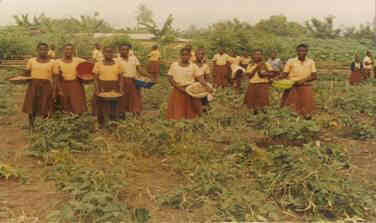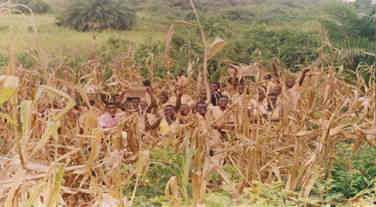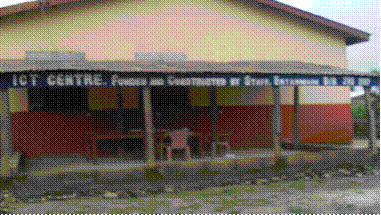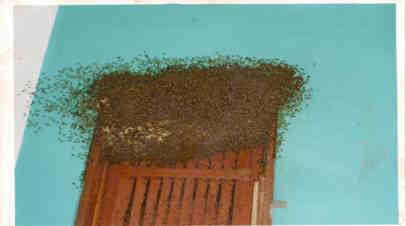|
Enyan-Maim Methodist School: 100 Years on
Enyan-Maim Methodist /District Assembly Primary and Junior
High School-JHS is located at a few distance off the
Adjumako-Apaa road with a student population of 780 made up
of 610 primary and 170 Junior High School pupils. It was
established on October 2, 1911 with about 32 pupils. Decades
after that on August 23, 1960 the middle school section now
Junior High School, was added with an initial 24 pupils.
The
school serves about six communities in the Ajumako-Enyan
Essiam district andfrom 2005 to 2011, it has successively
chalked up to one hundred percent (100%) in the Basic
Education Certificate Examination (BECE),and excelled in
many educational activities and other development projects.
Recently
Nyarkoa Foundation (an NGO I work for) and her partners,
Rural Education and Development Programme – REDEP undertook
on a working visit to the Ajumako-Enyan Essiam District
where they toured15 schools including the Enyan-Maim
Methodist/District Assembly Primary and JHS, which they have
been interacting with in their quest to improve education in
the district.
We were really moved withwhat we saw
at this particular school.
The attraction was that unlike what was evident in
other schools were they have ordinary gardens of not too
large sizes this school has a big farm they cultivated
maize, cow-pea, vegetables and crop seedlings. The school
also has acacia trees planted all around compound. The
attraction was, instead of an ordinary school garden this
school have made good use of the vast tract of landavailable
to it.
The team
became more interested in the school brought when three new
computers were shown to them.These computers had been
purchased with proceeds from the school farm.
But one
thing that saddened the hearts of the team members was the
fact that even though the school was poised at exposing the
schoolchildren to Information and Communication Technology,
the school had no laboratory and was unable to use its
make-shift structure for the purposes. The structure is very
dark and not conducive.
Like
other schools in the district,the school acquiresseeds
fromREDEP for cultivation. Every year before the rainy
season the school burns the acacia for charcoal. On our
visit the school out of over thirty acacia trees has
produced twenty bags of charcoal and during the visit, it
has produced 20 bags of charcoal, harvested three bags of
maize, some cowpeas and other vegetables.
The
school intends to prepare food for all the students on the
day it vacates that is “Our Day” thensell the rest for food
stuff.
Despite
these interesting stories about the school, it needs quick
intervention to address the problem of bee invasion at the
headmaster's office, some class rooms and the school
compound. The situation is so alarming that it has created
obvious fear in the pupils and teachers because of the
possibility that it can cause serious harm or even claim
lives as this has happened before elsewhere.
The Ghana
Education Service (GES), the Environmental Protection Agency
(EPA) and the ministry of Food & Agriculture among others
organizations are being requested to assist the
schoolchildren, management and staff to address this
unfortunate situation of bee invasion.
Promoting good and quality education in Ghana is not only
through providing school buildings, teachers, tables and
chairs, books and other teaching and learning materials to
schools but by supporting and protecting the well-being of
students, teachers and communities in all aspects of human
activities.
It is
imperative that Ghana Education Service (GES), concerned
public and private organizations including banks,
philanthropists and individuals come to the aid of
Enyan-Maim Methodist/District Assembly Primary & JHS.
Beatrice Torshie Torto
Assist. Country Rep.
Nyarkoa Foundation
beatricetorto@hotmail.com
|











